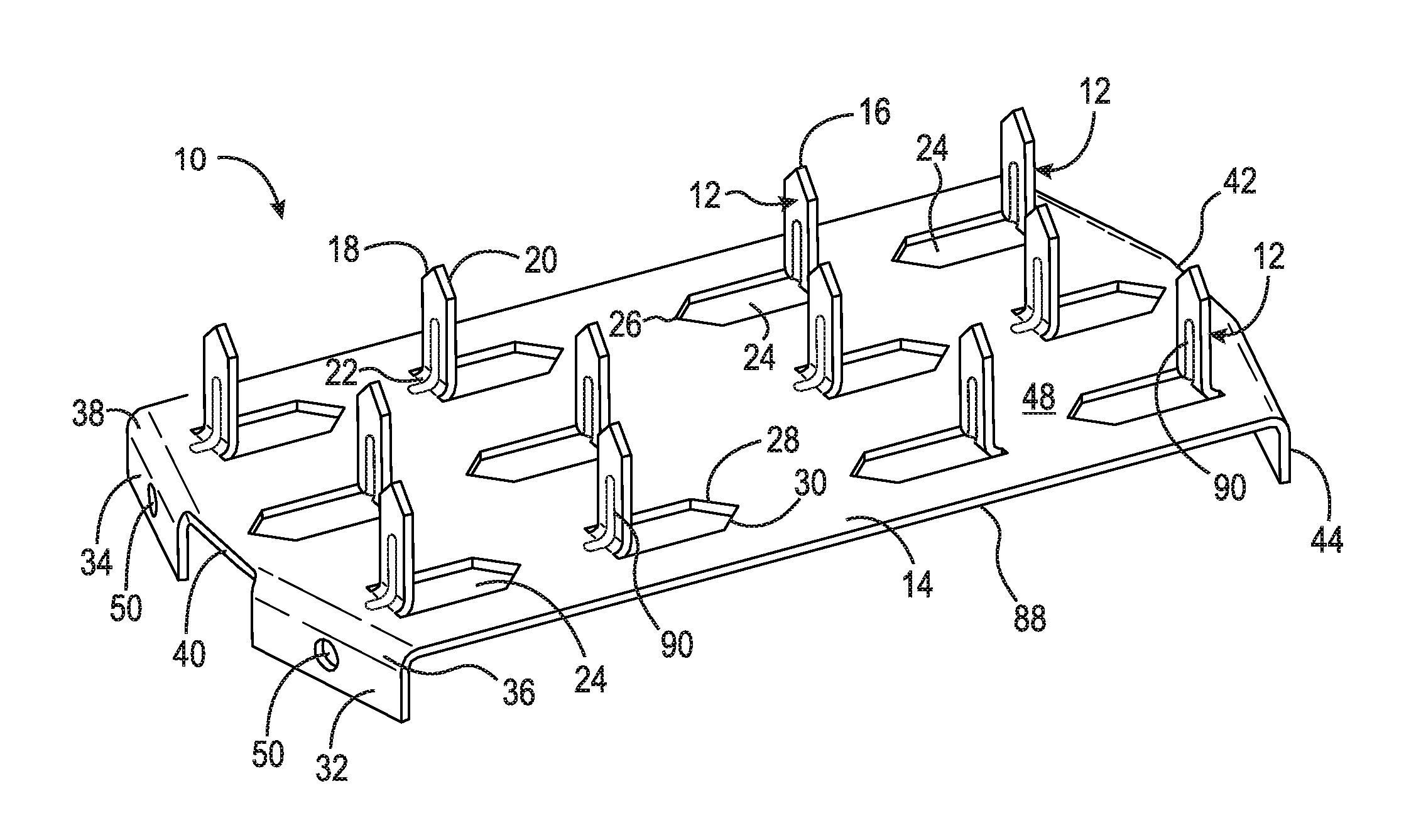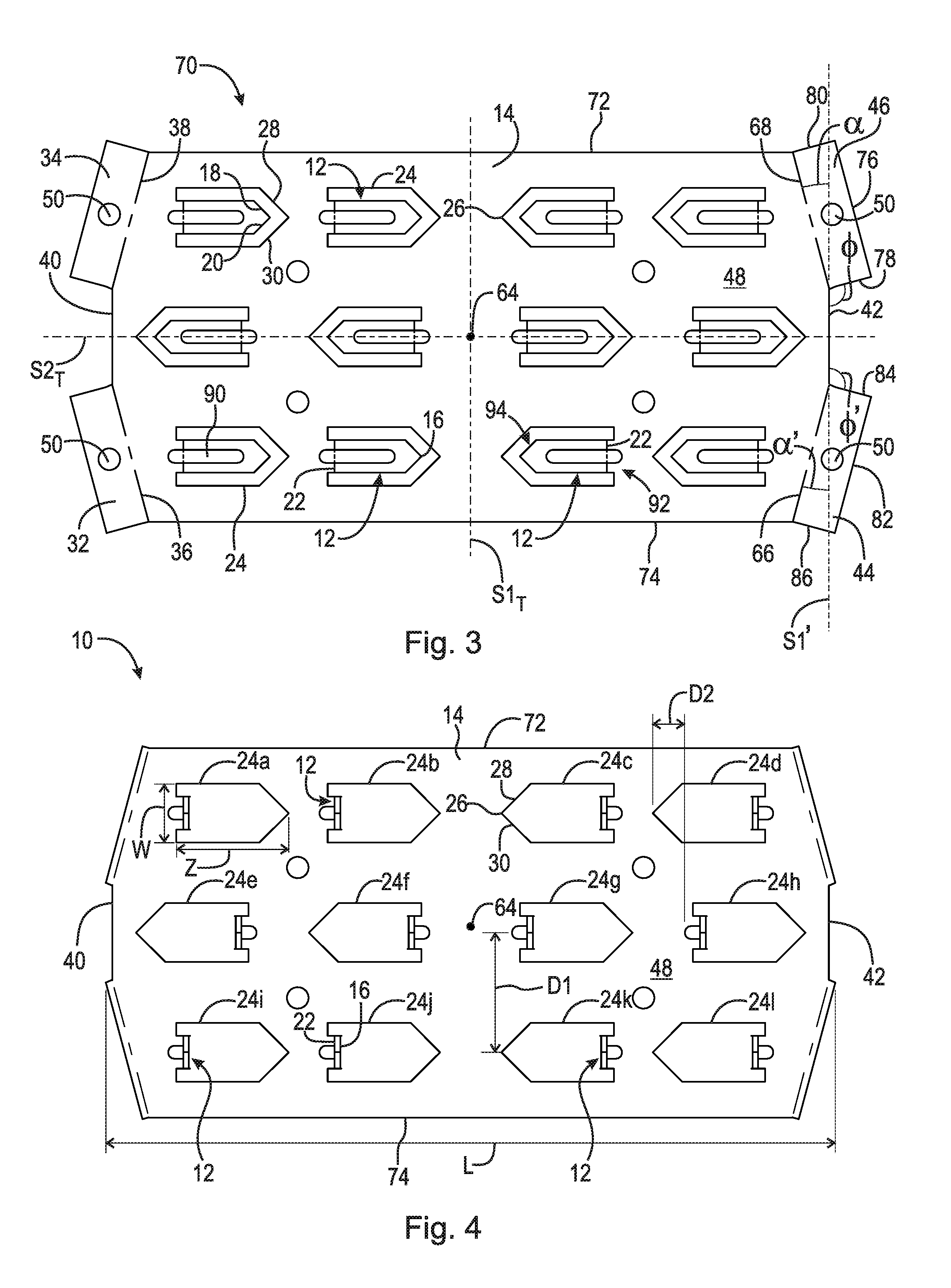Anti-splitting device
a technology of anti-splitting device and anti-splitting ring, which is applied in the direction of nails, pins, fastening means, etc., can solve the problems of affecting the anti-splitting device, affecting the anti-splitting effect, and affecting the stability of the anti-splitting device, so as to reduce the additional stress, reduce the effect of slipping and slipping, and facilitate the effect of insertion into the log
- Summary
- Abstract
- Description
- Claims
- Application Information
AI Technical Summary
Benefits of technology
Problems solved by technology
Method used
Image
Examples
Embodiment Construction
[0035]At the outset, it should be appreciated that like reference characters are used for like elements of the present embodiments or elements of like function. For the sake of clarity, only those elements and reference characters which are of relevance to the shown aspects of the respective embodiment of the present invention are shown repeatedly. In this regard, no attempt is made to show structural details of the invention in more detail than is necessary for a fundamental understanding of the invention, the description taken with the drawings making apparent to those skilled in the art how the several forms of the invention may be embodied in practice.
[0036]While the present invention is described with respect to what is presently considered to be the preferred aspects, it is to be understood that the invention as claimed is not limited to the disclosed aspects. The present invention is intended to include various modifications and equivalent arrangements within the spirit and s...
PUM
 Login to View More
Login to View More Abstract
Description
Claims
Application Information
 Login to View More
Login to View More - R&D
- Intellectual Property
- Life Sciences
- Materials
- Tech Scout
- Unparalleled Data Quality
- Higher Quality Content
- 60% Fewer Hallucinations
Browse by: Latest US Patents, China's latest patents, Technical Efficacy Thesaurus, Application Domain, Technology Topic, Popular Technical Reports.
© 2025 PatSnap. All rights reserved.Legal|Privacy policy|Modern Slavery Act Transparency Statement|Sitemap|About US| Contact US: help@patsnap.com



